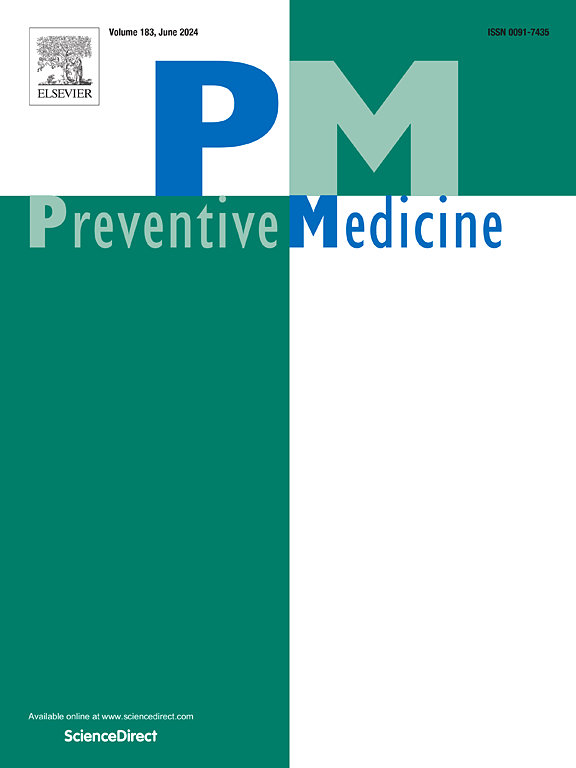Social network characteristics and type 2 diabetes self-management among Black/African American men: A cross-sectional analysis of support quality and communication patterns
IF 3.2
2区 医学
Q1 MEDICINE, GENERAL & INTERNAL
引用次数: 0
Abstract
Objective
Social networks and social support are critically important for Black/African American men managing Type 2 diabetes (T2D). This study aims to examine how social network characteristics are associated with T2D self-management among Black/African American men.
Methods
Cross-sectional survey data were collected from Black/African American men with T2D (n = 1225) from February to June 2024. Network composition included percentages of spouses, children, parents, siblings, friends, extended family, and healthcare providers. Network interaction measures included communication frequency, support quality, and perceptions of network members' health behaviors. Self-care activities were measured using the Summary of Diabetes Self-Care Activities scale across diet, physical activity, blood sugar testing, and foot care domains. Multiple regression analyses examined associations between network characteristics and each self-management domain while controlling for demographics.
Results
Diabetes-specific communication frequency was consistently positively associated with all self-care activities (β from 0.09 to 0.18,p < .05). Having very supportive network members was positively associated with diet (β = 0.17,p < .01) and physical activity (β = 0.20,p < .01), though mean social network support showed negative associations with these behaviors (β = −0.13,p = .03; β = −0.14,p = .03). Higher percentages of children were associated with better dietary behaviors (β = 0.06,p = .04), while having spouses (β = 0.06,p = .04), friends (β = 0.06,p = .03), and siblings (β = 0.06,p = .04) was associated with better foot care.
Conclusions
The quality and content of network interactions appear more important than network size for T2D self-management among Black/African American men. Interventions should focus on fostering quality, disease-specific support rather than expanding social networks. Future programs should leverage existing relationships while considering how different network members influence specific aspects of diabetes management.
黑人/非裔美国男性的社会网络特征和2型糖尿病自我管理:支持质量和沟通模式的横断面分析
目的社会网络和社会支持对黑人/非裔美国男性治疗2型糖尿病(T2D)至关重要。本研究旨在研究社会网络特征与黑人/非裔美国人T2D自我管理之间的关系。方法收集2024年2月至6月黑人/非裔美国男性T2D患者的横断面调查数据(n = 1225)。网络构成包括配偶、子女、父母、兄弟姐妹、朋友、大家庭和医疗保健提供者的百分比。网络互动测量包括沟通频率、支持质量和对网络成员健康行为的感知。自我护理活动采用糖尿病自我护理活动总结量表,包括饮食、身体活动、血糖测试和足部护理领域。多元回归分析检验了网络特征和每个自我管理领域之间的关联,同时控制了人口统计学。结果糖尿病特异性沟通频率与所有自我保健活动呈持续正相关(β = 0.09 ~ 0.18,p <;. 05)。拥有非常支持的网络成员与饮食呈正相关(β = 0.17,p <;.01)和体力活动(β = 0.20,p <;.01),但平均社会网络支持与这些行为呈负相关(β = - 0.13,p = .03;β = - 0.14,p = .03)。较高比例的孩子与更好的饮食行为相关(β = 0.06,p = 0.04),而有配偶(β = 0.06,p = 0.04)、朋友(β = 0.06,p = 0.03)和兄弟姐妹(β = 0.06,p = 0.04)与更好的足部护理相关。结论对于黑人/非裔美国人T2D自我管理,网络互动的质量和内容似乎比网络规模更重要。干预措施应侧重于培养高质量、针对特定疾病的支持,而不是扩大社会网络。未来的项目应该利用现有的关系,同时考虑不同的网络成员如何影响糖尿病管理的具体方面。
本文章由计算机程序翻译,如有差异,请以英文原文为准。
求助全文
约1分钟内获得全文
求助全文
来源期刊

Preventive medicine
医学-公共卫生、环境卫生与职业卫生
CiteScore
7.70
自引率
3.90%
发文量
0
审稿时长
42 days
期刊介绍:
Founded in 1972 by Ernst Wynder, Preventive Medicine is an international scholarly journal that provides prompt publication of original articles on the science and practice of disease prevention, health promotion, and public health policymaking. Preventive Medicine aims to reward innovation. It will favor insightful observational studies, thoughtful explorations of health data, unsuspected new angles for existing hypotheses, robust randomized controlled trials, and impartial systematic reviews. Preventive Medicine''s ultimate goal is to publish research that will have an impact on the work of practitioners of disease prevention and health promotion, as well as of related disciplines.
 求助内容:
求助内容: 应助结果提醒方式:
应助结果提醒方式:


